Review for The Train
Introduction
A couple of years ago, police found some 1500 pieces of stolen art in a Munich apartment, owned by a descendant of one of Hitler’s art dealers. There were works from artists such as Chagall, Matisse, Picasso, and Toulouse Lautrec, valued at something approaching a billion dollars, much of it looted during the Second World War. What followed bordered on the farcical. The art was discovered in the process of a tax investigation, and wound up being returned to the ‘owner’, as Germany’s statute of limitations on WWII art looted by individuals expired after 30 years. The onus fell on the original owners and their descendants to prove their claims, and rely on the goodwill of Cornelius Gurlitt in whose possession these artworks were, to return them. Cornelius Gurlitt died in 2014, leaving his collection to The Museum of Fine Arts Bern in Switzerland, and it now looks as if the lengthy process of repatriating these works can begin. Truth truly can be stranger than fiction, and it can also inspire great movies. The truth also is that the Nazis would have gotten away with a lot more stolen art than they did, were it not for heroes such as those portrayed in The Train, based too on a true story.
August 1944, and the Allies are making inroads into Nazi occupied France. The main focus of the German occupation is organising an evacuation, and in the middle of this, Colonel Von Waldheim is concerned with art. He’s a patron of the arts, sees the value in paintings, and during the occupation he used his influence to preserve classic works that Nazi dogma had labelled as degenerate. That’s something that had earned the gratitude of the Jeu de Paume museum, but that gratitude reaches an end when Von Waldheim orders the artworks packed up and made ready to be shipped back to Germany. Not that it will be easy, as the trains to Germany are needed for more material reasons. Even when he manages to commandeer a train, he finds that he’s pre-empted by Area Inspector Labiche of the French railway, albeit for a German artillery train.
But Labiche and his co-workers are also with the French resistance, though they aren’t impressed when the museum curator asks their help in saving the looted art, keeping it in France. It’s when another railway engineer, not in his resistance cell, tries a bit of petty sabotage to stop the art train, and is killed for his effort, and Labiche is forced into taking his place, that he becomes invested in stopping Von Waldheim from taking his ill-gotten gains across the border.
Picture
The Train gets a 1.66:1 pillarboxed monochrome transfer. It’s a deceptively splendid looking thing. I say deceptively, because at first glance it seems as if all Arrow did was take the original print and put it onto the disc. It’s generally stable, with the odd moment of wobble, it’s generally clean with the odd speck of dirt, a smidgen of print damage, and the image is alive with film grain. But when you see the consistent treatment given to the film, the clarity, contrast, and strong detail, you realise that they’ve just applied the slightest touch to make the film look as good as possible on disc, without compromising the original intent. The Train is a fantastically composed film, with rich, vivid and dramatic imagery, characters that fill the screen. It also transpires that this film was made when stunts and action had to be done for real. They really blew up a train yard for this film; three trains really did crash into each other. Visually this is an astounding film.
Sound
Not so much with the audio though, although I must state that the first problem I had turned out to be a player incompatibility issue on my end. I found that to keep the audio in sync, I had to delay it by 50ms on my Panasonic SC-BTT 490 Home Cinema. Arrow checked and it’s not a problem with the disc. This is the second disc with which I’ve had this issue, following Second Sight’s Midnight Run, although I won’t be holding my breath for a firmware update at this point.
The sole audio option on this disc is a PCM 1.0 mono English track, encoded at 1.1Mb per second. It’s an audio track that is very much showing its age. It puts across the action well enough, the dialogue is clear throughout, and Maurice Jarre’s music comes across well, but you do get distortion during the more strident moments, or with higher frequency sounds, that very much put me in mind of a tape that’s seen far too many plays over the years. English subtitles of the SDH variety are available.
Extras
The disc loads up an animated menu. From the audio options and the extras menu, you can access the director’s commentary from John Frankenheimer. It’s apparently taken from the DVD release, and it’s a Spartan affair, very gappy, but with some interesting recollections.
From the audio menu alone, you’ll find the isolated score, presented in DD 1.0 mono. It’s worth noting for those with the Panasonic SC-BTT 490, that this, and the audio commentary are in sync.
Also in the extras, you’ll find a featurette, Burt Lancaster in the Sixties, which lasts 36:20 HD, which looks at that interesting decade in Burt Lancaster’s career from the viewpoint of Lancaster’s biographer Kate Buford.
News Report 7:55 HD is a French TV News piece which goes behind the scenes of the village where much of the film was shot, getting interviews with the local residents.
Interview with Michel Simon 3:18 HD gets a couple of lines from the French actor that played Papa Boule in the film.
Finally on the disc you’ll find a minute of premiere footage, and 4:24 worth of Theatrical Trailer. It’s fascinating to see that even in 1964, they edited together trailers which basically gave the whole movie away.
Arrow also usually include a booklet with their releases, and they kindly supplied me with a pdf file which offers a preview of what purchasers will get to read. The 28 page booklet will offer a cast listing, an essay on the film and its fraught production, period reviews of the film, and promotional stills.
Conclusion
It’s almost an oxymoron these days, but The Train really is a smart action movie. They really knew how to make them back in the sixties and seventies. It’s a great, suspenseful and gripping story, with fascinating characters, brilliant cinematography and breathtaking action. Of course this was back when stunts were real and Burt Lancaster did most of his own in this film. When you see steam trains crash into each other in actuality, it belittles anything that could be done with models or modern CGI.
World War II was and is one subject matter that does allow for smart action movies, simply because it’s unwise to make light of the subject. The stakes were so high, the events so harrowing, that even the most light-hearted of war pictures tend to have a gravitas that other films lack. The Train is most certainly not light-hearted, and it devotes a greater narrative reality to its story. It establishes its credentials early on when it dispenses with the cliché of the sympathetic Nazi. Just to get some kind of balance, many war films, certainly of the sixties would have a Nazi character that viewers could relate to, could at least empathise with slightly, such as the guard Werner in The Great Escape.
Here to begin with, you might think that Colonel Von Waldheim is a sympathetic character, after all he’s helping a French museum curator to preserve proscribed works of art. The lie to that is quickly revealed when it becomes clear that he’s collecting all of this art for himself, dropping the bombshell when his forces turn up to package the paintings and ship them to Germany. His obsession with the art, and his determination to steal it increases as the film unfolds, and he becomes ever more callous as he does so.
The Train was presented as a tribute to the rail workers of the French Resistance, and it’s they, and Labiche who are the heroes of the film, going to extremes of sacrifice to preserve French cultural heritage. But there’s always a dark irony to the story, the question of whether an irreplaceable work of art is worth a human life. The Labiche character embodies this question in the film. He’s initially approached as a member of the resistance to prevent the Nazis from stealing the art and he refuses. It’s only when someone dies for it that he becomes invested in stopping the Nazis. It’s a crafty plan to hoodwink the soldiers, but once it goes off the rails, and more lives are lost, Labiche starts questioning just why he’s fighting so hard. The answer of course is obvious, but the reasons behind that answer remain ambiguous, all the way through the end of the film. It’s smart and it’s thought provoking.
The Train is well worth your time. There aren’t that many black and white action movies shown on television any more, indeed John Frankenheimer states that this is the last monochrome action film ever made in the commentary, but it looks amazing, atmospheric and gripping in HD. Despite the caveat and provisos about the transfer in the booklet, I do feel that the audio presentation could be stronger, clearer at least, but the dialogue is clear, and the film is very watchable. The Train will find room in any collection.
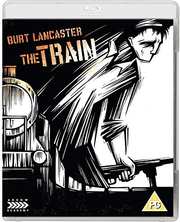
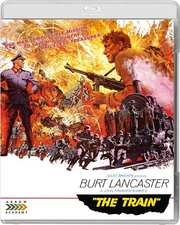
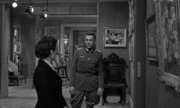
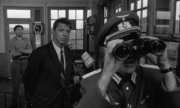
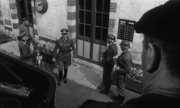
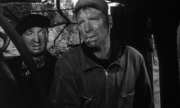
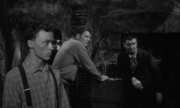
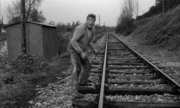






































Your Opinions and Comments